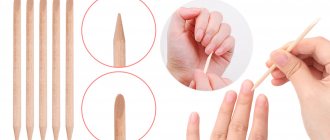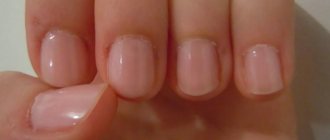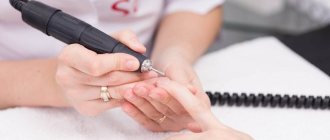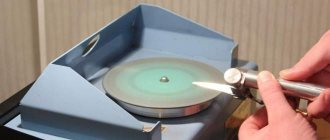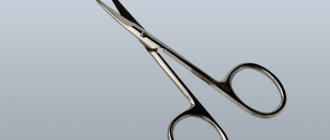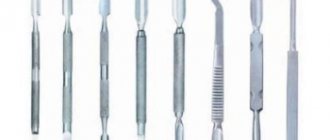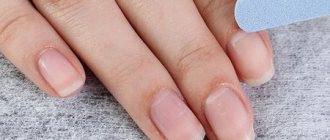You all know that the cuticle is the skin located at the base of the nail, which primarily performs protective functions. It prevents the penetration of various bacteria into the matrix area. Therefore, the question of why remove the cuticle if it plays such an important role is very logical. The main reason is, of course, the aesthetic factor. After all, to make your nails look neat, you need to take care of your cuticles. You all know a tool that helps in this matter - orange manicure sticks have long become an indispensable attribute of a woman's cosmetics bag. But there are other devices for caring for cuticles, which we will look at in this article.
If you hear about some manicure tools for the first time, it’s not a problem. Explanatory photos will help you visually evaluate each of the described cuticle care devices. But first of all, it is necessary to make a small distinction between the two concepts. Cuticle removal can be done using a European or classic manicure. The latter method involves mechanical removal of the skin using cutting tools. European manicure allows you to remove the cuticle chemically, using special creams and oils. In addition, the skin can either simply be moved away or completely removed.
What is more correct: removing or pushing back the cuticle?
You can learn more about the topics of edged and unedged manicure on the pages of our website. Today we will try to briefly examine this issue. Throughout the world of the nail industry, it is generally accepted that the unedged type of manicure is the most gentle and correct . There are a number of justified reasons for this.
- Pushing back the cuticle without mechanical removal helps slow down its growth. If you use a special oil for the periungual skin, it becomes even thinner. On the contrary, trimmed manicure provokes active growth of the cuticle.
- Maintaining the integrity and integrity of the skin reduces the risk of infection.
- Refusal of cutting tools eliminates the possibility of accidental injuries.
- Maintaining a protective barrier at the base of the lunula reduces the level of negative environmental influences. The cuticle helps nourish and moisturize the nail plate.
Despite all the advantages of unedged manicure, it is not without its disadvantages. Therefore, every girl chooses the most convenient method for her. Let's figure out what tools you can use to care for your cuticle.
Using manicure sticks
Removing cuticles with an orange stick is the main purpose of this manicure tool. It can also be used to remove dirt from under nails, remove shellac, and make designs. Before you do a manicure at home, you need to understand how to use an orange stick.
Working with the cuticle
Nails with overgrown cuticles look ugly and untidy. Therefore, before doing a manicure, you need to figure out how to remove cuticles with an orange stick.
With a trimmed manicure, the cuticle is removed with nippers or nail scissors, and with an unedged manicure, it is carefully pushed back with the beveled edge of a stick. If desired, you can soften the cuticle and remove it with the pointed end of the tool.
Baths with oil, sea salt or herbal decoction will help prepare your nails for cuticle removal. They are prepared as follows:
- Add 2 tbsp to 1 glass of water. l. table salt, 3 drops of iodine, 1/3 cup of freshly squeezed orange juice.
- Add 1 tbsp to 1 glass of water. l. salt, 2 drops of essential oil (such as lavender or ylang-ylang). Stir thoroughly until the salt dissolves in the liquid.
It is not recommended to do the above baths for damaged, inflamed or flaky skin. In such cases, you can add a decoction of chamomile, sage or oak bark to the water. Before performing the procedure, you should wash your hands with soap. This will prevent the development of inflammatory processes in case of microtrauma.
The procedure for removing (pushing back) the cuticle is as follows:
- First you need to do a home peeling (immerse your hands in the bath for 5-10 minutes and blot with paper napkins). If you decide to push back the cuticle yourself, you should do a bath for one hand, and then for the other.
- Remove the stratum corneum with the pointed end of the tool, trying to leave a thin strip of cuticle (you need to act as carefully as possible). If desired, you can push back the cuticle with the beveled side.
After completing the procedure, it is necessary to soften the skin (apply oil to the cuticle in a circular motion, rubbing for 3-5 minutes). The following tools are suitable for this:
- sesame oil - moisturizes the cuticle and nail plate;
- aloe oil - relieves inflammation;
- tea tree oil - kills fungal pathogens, prevents the development of mycosis;
- shea butter - soothes damaged skin;
- wheat germ oil - protects the skin from the effects of free radicals, is a record holder for vitamin E content.
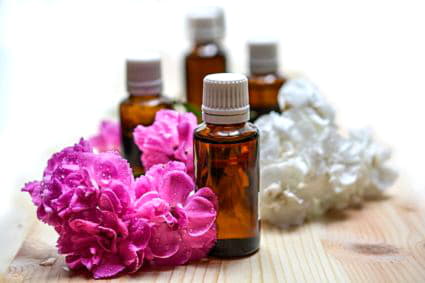
Some masters use a softener (remover) to remove cuticles, the active components of which are fruit acids. It is recommended to use it no more than once a week, as it can cause adverse reactions on the skin (itching, burning, redness, etc.). After removing the stratum corneum and the product itself, apply oil to the cuticle.
Cleaning your nails
To clean the inner surface of the nail, the pointed end of the tool is passed under the nail plate. In this case, the main task is not to injure yourself (the skin under the nail is especially sensitive).
If you plan to use the stick a second time, it should be cleaned of dirt (to stop the growth of bacteria).
Performing a manicure
The beveled surface of the stick is used in the following cases:
- Removing shellac. The master applies a special liquid to the nails and “wraps” them with foil. After 10-15 minutes, when the gel polish becomes soft, it is carefully lifted and separated from the surface of the nail plate.
- Correction of finished work. If you perform a manicure carelessly, some of the varnish may get on the skin. You can remove it with a beveled edge, pre-moistened in acetone or a special liquid.
- Creating nail art. You can use a wooden stick to create a design: beads (dotted), sparkles, beads, rhinestones and other decorative elements are placed with the pointed end of the tool. An orange stick allows you to do aqua manicure and apply all kinds of designs.
Using the tool, you can also stick tips and create patterns from biogel and acrylic.
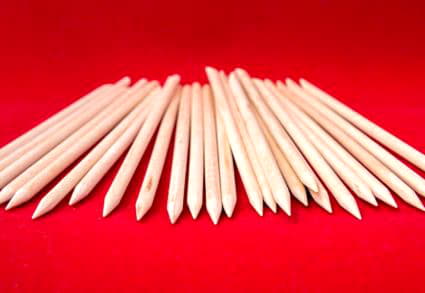
Features of using an orange stick
The most commonly used manicure tool is the orange stick. It owes its name to the material from which it is made. The orange tree is famous for its excellent antiseptic properties. Its wood has a soft but very dense structure, so the manicure stick does not delaminate and does not damage the nails. It absorbs moisture quite well, so the tool is disposable, because a humid environment is an ideal place for bacteria.
Both ends of the orange stick are flat, but one of them is sharpened more and the other less. If desired, the angle of inclination can be adjusted with a regular coarse abrasive file. The orange stick comes in different lengths, ranging from 9-18 cm, and thickness, averaging 3-5 mm. There are specimens with rubber tips, but their benefits for nails are significantly lower. In the photo you can see examples of orange manicure sticks.
Looking at a simple tool, the question immediately arises about how to use it. The sharp tip of an orange stick perfectly cleanses the area under the nail from dirt. To push back the cuticle, the blunt edge of the tool is most often used. After steaming or applying a special product with an orange stick, you can completely remove dead pieces of skin. In addition, the pointed edge is very convenient for removing softened gel and acrylic coating after extensions. As a handy tool, an orange stick is used when applying rhinestones, glitter and other decorative elements to nails.
Why are the sticks orange?
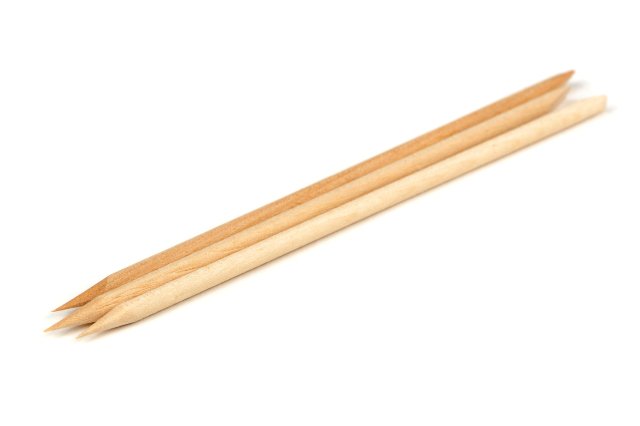
It's simple - they're made from orange wood. The question is why it was chosen for the manufacture of manicure tools.
- This material is strong and dense enough not to break or flake when manipulating the nails.
- At the same time, it is quite soft - which means that the nails (especially at the base - in the most sensitive and vulnerable place) will not be injured if you use such sticks with the necessary amount of caution.
Return to contents
Metal cuticle spatula
In the makeup bag of many girls you can find another tool, this time a metal one. The ease of use of a manicure pusher has made it very popular among women. The ends of the metal rod come in different shapes. The edge can be made in the form of a spear, hatchet or spatula. There are models with a trimmer at the end - a knife reminiscent of a slingshot. The photo shows several varieties of pushers.
A high-quality instrument is made of medical steel. Its blade is quite sharp and does not require pre-sharpening. A pusher or scraper is easily disinfected, which is why it is popular among manicurists. The metal tool can perform all the functions of an orange stick. But it is worth noting that you should use a manicure scraper very carefully, because a steel spatula can significantly damage the nail plate. To reduce possible harm, it is better to use models with rubber tips.
Working with the cuticle
The orange stick is highly valued by specialists as an excellent tool for performing a fashionable European manicure. Indeed, in this case, the cuticle is not cut, but carefully pushed to the edge of the nail plate. In order to carry out this procedure, relaxing baths or special cosmetics designed to work with the cuticle are used. You can also do this job using a rubber or metal spatula. But in this case there is a possibility of damage to the cuticle. Orange sticks are safe in this sense. Using the blunt tip of this tool, you can gently push back the cuticle. Also, using an orange stick will help avoid infection, and therefore inflammation, as well as the formation of hangnails.
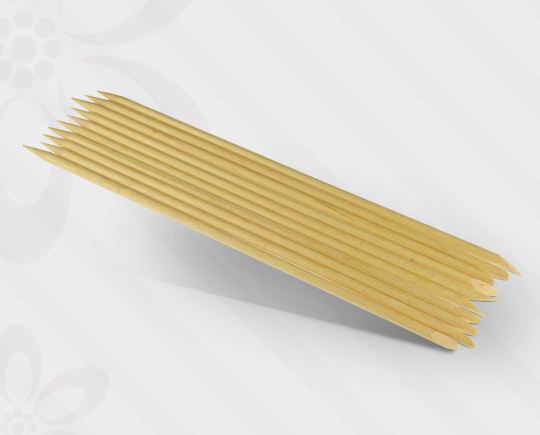
Cuticle files
An average option between trimmed and untrimmed manicure is to care for the cuticle using a laser file. The special coating of the tool gently exfoliates dead cells without injuring living healthy skin and the nail itself. You will find more detailed information about various nail files in the feature article on our website, and to get a general idea of them, look at the photo.
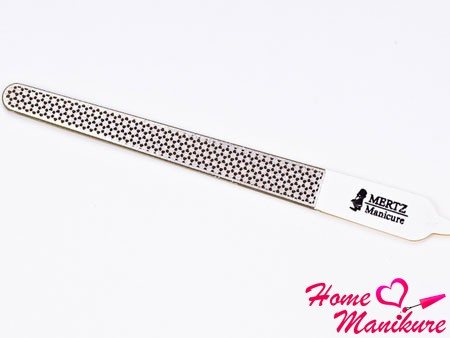
The final video demonstrates the technology of working with a laser file, and as a bonus, considers another way to push back the cuticle - using a special pencil. Expand your horizons and discover new methods of caring for your cuticles and nails with us. Enjoy watching, dear girls!
How to use it correctly
In the European unedged version, an object made of orange wood painlessly and gently pushes the cuticle away from the hole. If you look at the instrument, the question of how to use the stick will disappear. There are two sides to it. The first beveled edge resembles a pusher and is ideal for pushing back the growing area. However, in the European version, the main remedy is oil, which softens dead skin cells and makes them less noticeable.
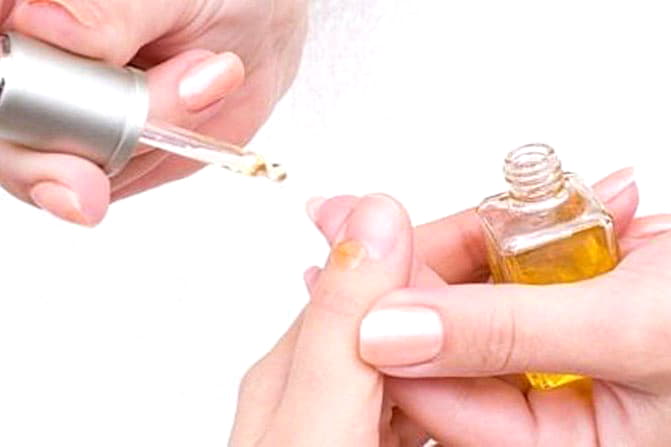
If you remove the cuticle using forceps or scissors, then the stick acts as an auxiliary tool. It lifts the cuticle and cleans the pterygium. The orange object makes the manicure less dangerous. You can work with the root part, where the capillaries and matrix zone of the nail are located.
Peculiarities
A wooden stick is a disposable tool. After use, it is thrown away without regret. It cannot be disinfected, and repeated use risks introducing infection. In addition, wood absorbs moisture and swells. Therefore, buy a lot at once, because even during one procedure you may need several of them. The average price for a set of orange manicure sticks of 10 pieces. does not exceed 100 rubles. You can give the stick softer edges using a coarse abrasive file. Make your purchase in specialized cosmetic departments or trusted online stores to be sure of its quality.
Sticks with colored coating or rubber tips are available for sale. However, judging by the reviews, there is nothing better than the simplest one without any tricks.
